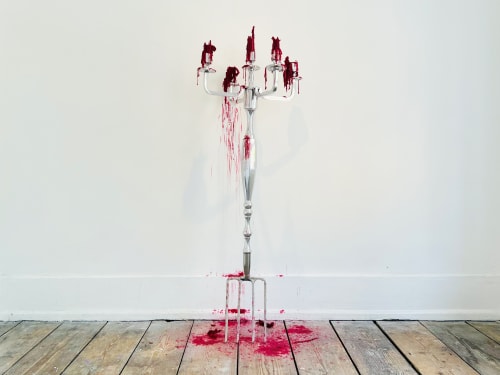“To be nobody but yourself in a world which is doing its best, night and day, to make you everybody else — means to fight the hardest battle any human being can fight; and never stop fighting.”
— E.E. Cummings
When we reflect on what renders an artwork meaningful, we look not to categorical definitions or fixed criteria, but to its capacity to affect - to unsettle, arrest, and endure. A work becomes significant when it interrupts the rhythm of daily life, not through what it illustrates, but through what it provokes. Its relevance lies in its ability to awaken something latent in the viewer. It is within this liminal space - between affect and cognition - that a work asserts its presence. Its value does not lie in explanation, but in resonance: in how it elicits a response beyond articulation. At its most essential, art is a form that grants presence to the inexpressible
Chez Moi unfolds as an inquiry into unvarnished reality - into forms of truth that are intimate, chaotic, tender, or unresolved. Rather than situating the works within the abstraction of a conventional gallery setting, the exhibition inhabits the domestic: the site of lived experience, where space is shaped by memory, conflict, affection, and desire. The domestic interior - specifically, the space of the home - offers a context formed by intimacy rather than neutrality. In its repetitions and routines, its accumulated traces and textures, the home becomes a space where emotion unfolds without pretence. Behind closed doors lies not only the architecture of daily life, but also the residue of longing, tenderness, shame, and all that resists articulation
This space holds the weight of human presence: solitude and companionship, ambiguity and rupture, desire and withdrawal, conflict and reconciliation, dependence and escape, promise and betrayal. It holds the lingering unease, the unspoken shame, the sadness that comes without warning, the hesitation before a choice, and the discontent that follows fulfilment. It carries the intimacy once shared with another and the tug-of-war within oneself - all that remains unforgettable: the fear that echoes inside, the undisclosed desires, the unspeakable truths
The act of viewing becomes, in this context, a conscious transgression — one shaped not by passive observation, but by mutual implication. It is a subtle complicity, an invitation extended by both artists and curators. It is a sanctioned closeness, a guarded acceptance of intrusion. It is a negotiation - delicate and unresolved - around proximity, trust, boundary, and recognition
We hope to offer a way of seeing - one that leads the viewer between the everyday and the artistic, between what is seen and what is felt. We are never simply looking at art, never merely observing others. In every act of looking, we are searching for a part of ourselves
“We don’t see things as they are, we see them as we are.”
— Anaïs Nin
